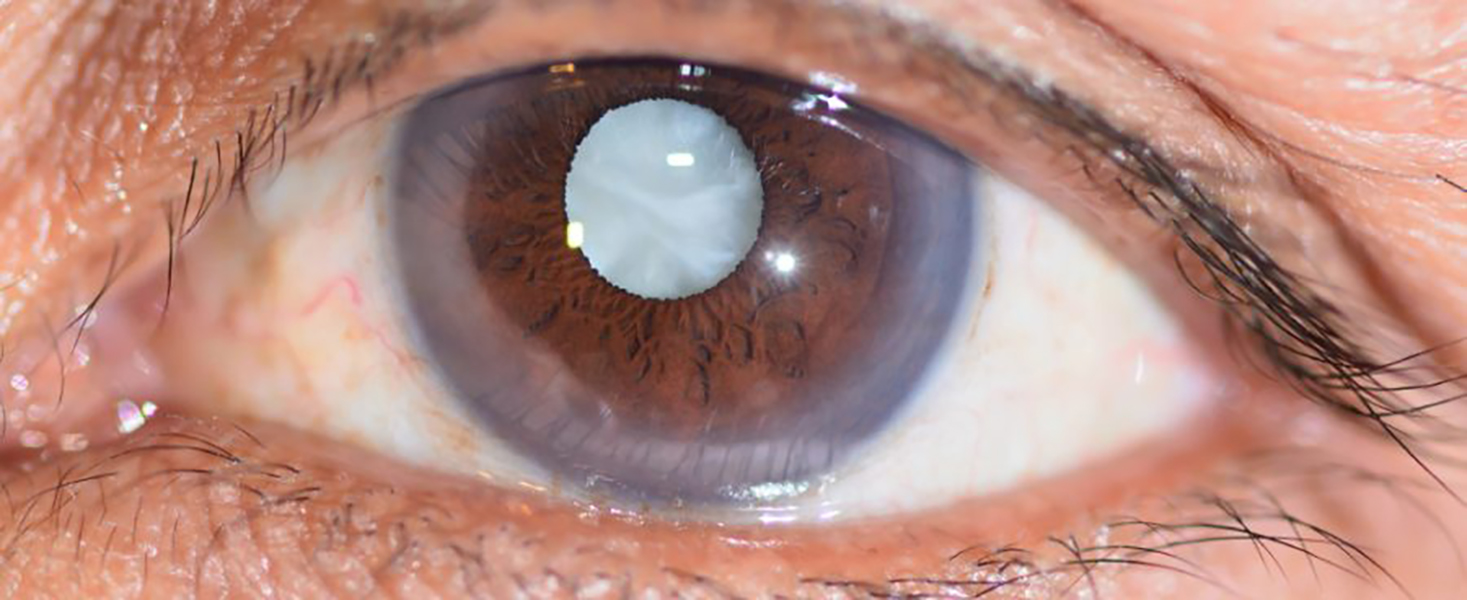A cataract is the clouding of the natural lenses in the eye, which is located inside the eye behind the pupil and the iris. Cataracts are the most common cause of vision loss in those over 40 years old. Overall, it is the leading cause of blindness throughout the entire world.
The most common forms of cataract are:
- Cortical cataract: These are known by their cloudy, wedge-like opacities. They begin in the lens periphery and grow towards the centre of the lens in a spoke-like pattern.
- Nuclear cataract: These form as diffuse, cloudy opacities within the central zone of the lens, known as the nucleus. These are the most common form of age-related cataract.
- Subcapsular cataract: These form as dense opacities on the back of the lens. Subscapular cataracts are sometimes associated with long-term doses of steroid medications and diabetes.
Symptoms
A cataract begins as a small cloudy area in the lens and has very little effect (if any) on your sight. As the cataract matures, your vision will become a little blurry as if looking through a piece of frosted glass. At the same time, you may notice that you’re more sensitive to glare or that colours appear less vivid. During the early development of a nuclear cataract you may experience a temporary improvement in your vision that is known as ‘second sight’. The bad news is this ‘second sight’ is short-lived and will go away as the cataract matures. If you suspect that you have a cataract you should visit an optometrist as soon as possible for diagnosis and treatment.
Causes
The eye lens works a lot like the lens of a camera. It gathers light from the pupil and focuses it upon the retina so that a clear image is produced. In addition, it adjusts the focal length of the eye by letting it see things clearly no matter how close or far they may be. The lens is composed mostly of protein and water. The protein is precisely arranged so that it has great flexibility and allows light to pass through the lens without a problem. However, as we get older, the protein can stick together and begin to form cloudy areas in the lens, which we call cataracts. Over time cataracts get bigger and more clouded, which leads to further loss of vision. No one knows exactly why the lens goes through these changes as we get older. However, research across the globe has identified certain factors that are linked to the formation of cataracts. Apart from advanced age, risk factors include:
- Diabetes
- Family history/genetics
- High Myopia
- Hormone replacement therapy
- Hypertension
- Longterm corticosteroid medications
- Medications used to lower cholesterol
- Obesity
- Over consumption of alcohol
- Past eye injury
- Past eye surgery
- Smoking
- Ultraviolet rays from the sun
Prevention
Studies suggest that specific dietary nutrients and nutritional supplements can actually reduce the chances of developing cataracts. These include:
- Vitamin E
- lutein
- xeathanthin
- Vitamin C
- Omega 3 fatty acids
Treatment
When cataract symptoms begin to appear, you might be able to improve your eye sight for a short time by using new glasses or contact lenses. When they become a significant visual obstruction then your optometrist will recommend having the cataracts removed by an ophthalmic eye surgeon. Many people think low vision is part of aging that is unavoidable, but the surgery for cataracts is a common procedure that helps many patients regain their vision. Cataract surgery involves removing the cloudy natural lens in your eye and replacing it with a small plastic lens that is specifically made to improve your vision. The eye surgeon will aim to make your distance vision as clear as possible, but you are likely to still need reading glasses afterwards.
